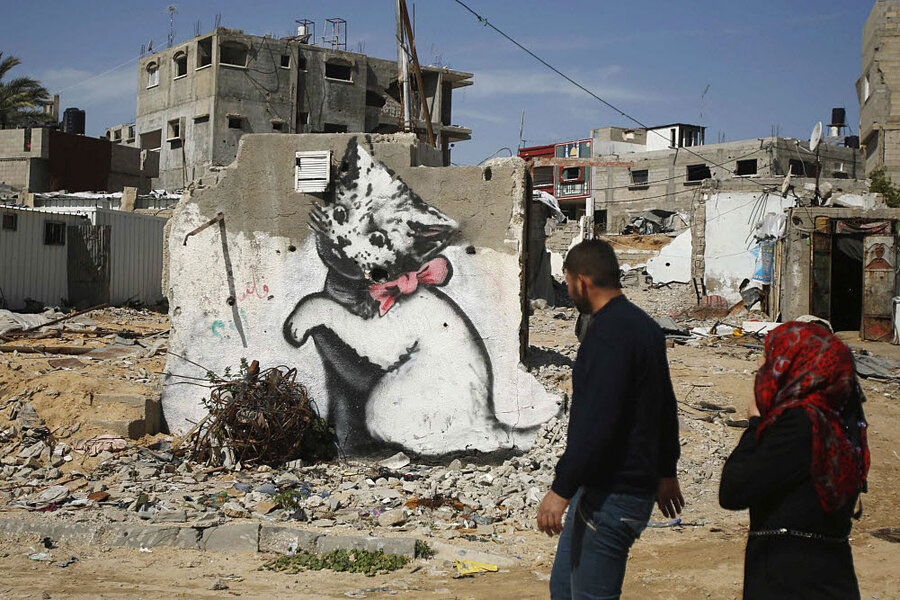What is Banksy doing in Gaza?
Loading...
Israel's "Operation Protective Edge" ended six months ago, and yet Palestinian reconstruction efforts in Gaza have mostly stalled.
But Palestinians are getting a propaganda boost from the notorious British street artist Banksy, who illegally crossed into Gaza through smuggling tunnels to produce a mock tourist video advertisement – and posted the video on his website.
The video starts by inviting viewers to, "make this the year, YOU discover a new destination." Then, he proceeds to sarcastically promote all of the "virtues" of visiting the territory. He calls Gaza, "well away from the tourist track (access is via a network of illegal tunnels.)" The camera follows him through the tunnels before he opens a metal door and steps out into the debris that is the Gaza Strip in the aftermath of war.
"The locals like it so much, they don't leave, (because the aren't allowed to,)" one scene is subtitled. Banksy also mentioned that Gaza was, "surrounded by friendly neighbors," but then cited the more than 18,000 homes destroyed in Operation Protective Edge, according to the United Nations.
While he was on the ground in Gaza, Banksy created a couple of outdoor murals to display his view of the Israeli-Palestianian conflict, which attempted to illustrate the misery and hopelessness felt by Palestinians, according to RT. One image depicts a group of silhouetted children on a swing that hangs from Israeli army watchtower. Under the image on his website he wrote, "Gaza is often described as 'the world's largest open air prison' because no-one is allowed to enter or leave. But that seems a bit unfair to prisons - they don’t have their electricity and drinking water cut off randomly almost every day."
One of the most circulated images was a mural of a kitten on a crumbling wall of a home. The kitten appears to be playing with a mangled ball of twisted metal, resembling a ball of yarn. "A local man came up and said 'Please - what does this mean?' I explained I wanted to highlight the destruction in Gaza by posting photos on my website – but on the Internet people only look at pictures of kittens," Banksy wrote on his website.
According to Smithsonian Magazine, the unidentified Banksy first came into prominence in the 1990s for graffiti "bombing" buildings around Bristol, England. He has since gone on to create street artwork in many major cities. His film, "Exit Through the Gift Shop" was nominated for an Academy Award and he gave his last in person interview in 2003. False rumors of Banksy's arrest in a London suburb circulated last fall, but the report from the satirical National Report was a hoax.
The short Gaza film ends with a shot of a quote on a wall from the late Brazilian educator Paulo Freire, "If we wash our hands of the conflict between the powerful and the powerless we side with the powerful – we don't remain neutral." CNN reported it is unclear if Banksy wrote the quote or he stumbled upon it.








